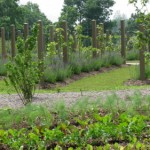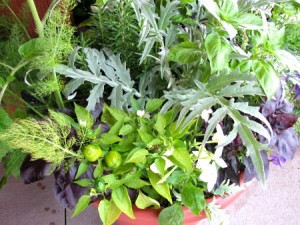It’s beet time again, and I say hooray. I love beets. This year’s beet recipe is a joy due to its versatility and simplicity.
But first, a look at the beauteous root (partially peeled):
How could anyone not want to eat something so beautiful?
Anyway, this recipe is based on one in How to Cook Everything, by Mark Bittman. In these parts, all the fresh ingredients except the orange are available now from local farmers. Yum!
Raw beet salad with Napa and orange
- 1 pound beets
- 1 pound Napa cabbage (probably 1/4 to 1/2 head)
- 2 large shallots (I used 1 shallot and 1 smallish leek), minced
- 1/2 teaspoon salt, or to taste
- 1/4 teaspoon freshly ground pepper, or to taste
- 2 teaspoons Dijon mustard (but I wish I’d used 1 teaspoon)
- 2 tablespoons extra virgin olive oil
- 3 tablespoons vinegar (Bittman suggested sherry vinegar, which I didn’t have; I used balsamic)
- 1/4 cup chopped fresh parsley leaves
- 2 oranges, peeled and roughly chopped (including juice)
- Peel and shred the beets. Thinly slice cabbage crosswise. Place beets, cabbage and shallots in bowl.
- In a jar with tight-fitting lid, add salt, pepper, mustard, olive oil and vinegar. Shake well, and pour over vegetables. Toss. If desired, marinate an hour or so.
- Add parsley and oranges. Toss to combine, and serve. Makes about 8 servings.
The final product (with a little orange zest on top):
Variations
The recipe above, which you can halve, is the variation I made. Bittman proposes several variations:
Basic: Use all beets (beets replace cabbage) and add a sprig or two of minced fresh tarragon if desired.
With fennel: Replace cabbage with thinly sliced fennel, and make a dressing that omits the mustard and uses lemon juice instead of vinegar.
With carrots and ginger: Use shredded carrots instead of cabbage and cilantro instead of parsley and add a couple tablespoons minced fresh ginger. For the dressing, use peanut (instead of olive) oil and lime juice (instead of the vinegar).
I happen to have some beets left. We’ll see whether I’ll try one of these or another variation altogether. Wish I had some fennel…














